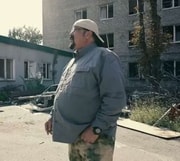Experts predict more earthquakes after two devastating earthquakes
By
Seia Ibanez
- Replies 11
The ground beneath the New South Wales Upper Hunter region has been restless, leaving residents on edge as experts warn that more seismic activity could be on the horizon.
The recent tremors, including a significant 4.7-magnitude earthquake followed by a 4.5-magnitude aftershock, have rattled nerves and raised concerns about the safety and preparedness of those living in the area.
The first quake, which struck near the town of Denman, close to Muswellbrook, was powerful enough to be felt from Canberra to Coffs Harbour.
It prompted school evacuations and damaged homes, with reports of collapsed chimneys and broken windows.

The aftershocks that followed have only intensified the anxiety for the 2,500 people left without power and water, as the ongoing seismic activity hinders infrastructure repairs.
Geoscience Australia's senior seismologist, Dr Hadi Ghasemi, has described the occurrence of two main shocks of similar size from the same location as 'interesting'.
‘Usually, what we observe is a main shock and an aftershock,’ he said.
‘This time what we have is two main shocks at very similar size coming from the same location.’
Dr Ghasemi has cautioned that the region could see more aftershocks in the coming weeks and months.
‘Following earthquake aftershocks, parts of Muswellbrook Shire are without water, including Woodland Ridge and potentially areas of Eastbrook Links,’ the Muswellbrook Shire Council said in a social media post.
‘Council staff are working now to restore water supply to these areas as soon as possible.’
Ghasemi said that more aftershocks could occur throughout the day.
‘Generally speaking, the largest aftershocks tend to occur at the earliest stages of the sequence,’ he said.
‘As the time goes by, the frequency of the aftershocks start to decay too.’
Ghasemi advised residents to drop to their hands and knees and find cover under a sturdy shelter should there be a stronger earthquake.
The tremors followed hours after the initial earthquake on Friday, 23 August, in the town of Denman.
Initially reported as a magnitude 5, the quake was later downgraded to 4.7. More than 3,000 people across the state reported feeling tremors as far north as Coffs Harbour and as far south as Canberra.
Ghasemi called the quake ‘moderate’.
‘But, having said that, it is powerful enough to generate seismic waves, travelling a distance,’ he added.
‘We used records from thousands of kilometres away to locate the event.’
The earthquake, which affected New South Wales, Victoria, and Western Australia, is linked to the region's seismically active coastline.
According to seismologist Michael Turnbull, he predicted that 'reasonably sized' earthquakes of at least magnitude 3.0 could hit the area for the next 'couple of months'.
'It's quite possible that there could be earthquakes as big as the main shock in the future,' Turnbull said.
He also warned that older buildings, especially unreinforced masonry ones, are at higher risk from aftershocks.
'A lot of the building stock around the Hunter Valley is fairly old. It was settled very early,' he said.
'If you get a decent shaking, you're going to have the masonry falling away from the walls.'
Such was the case of real estate agent Tony McTaggart, whose business was in a century-old building in Muswellbrook that crumbled down.
'Miraculously, no one was in the alley at the time because one brick could have been enough to severely injure someone or worse,' McTaggart said, as he noted that the area was sometimes a busy walkway.
His wife, Prudence, was working in the building when it started to shake.
'It seemed an awful long time that the movement was happening,' Prudence McTaggart said.
We could start to hear the bricks falling down the chimney as well.
'You could see the dust and the rubble all in the laneway. The dusty was still flying around a little bit.'
You can watch the 9 News Sydney’s coverage below:
Credit: 9 News Sydney / YouTube

Members take these warnings seriously, and please stay safe.
Do you have more tips for preparing for earthquakes? Let us know in the comments below!
The recent tremors, including a significant 4.7-magnitude earthquake followed by a 4.5-magnitude aftershock, have rattled nerves and raised concerns about the safety and preparedness of those living in the area.
The first quake, which struck near the town of Denman, close to Muswellbrook, was powerful enough to be felt from Canberra to Coffs Harbour.
It prompted school evacuations and damaged homes, with reports of collapsed chimneys and broken windows.

NSW residents have been shaken by another tremor after an earthquake in the Upper Hunter region. Credit: 9 News Sydney / YouTube
The aftershocks that followed have only intensified the anxiety for the 2,500 people left without power and water, as the ongoing seismic activity hinders infrastructure repairs.
Geoscience Australia's senior seismologist, Dr Hadi Ghasemi, has described the occurrence of two main shocks of similar size from the same location as 'interesting'.
‘Usually, what we observe is a main shock and an aftershock,’ he said.
‘This time what we have is two main shocks at very similar size coming from the same location.’
Dr Ghasemi has cautioned that the region could see more aftershocks in the coming weeks and months.
‘Following earthquake aftershocks, parts of Muswellbrook Shire are without water, including Woodland Ridge and potentially areas of Eastbrook Links,’ the Muswellbrook Shire Council said in a social media post.
‘Council staff are working now to restore water supply to these areas as soon as possible.’
Ghasemi said that more aftershocks could occur throughout the day.
‘Generally speaking, the largest aftershocks tend to occur at the earliest stages of the sequence,’ he said.
‘As the time goes by, the frequency of the aftershocks start to decay too.’
Ghasemi advised residents to drop to their hands and knees and find cover under a sturdy shelter should there be a stronger earthquake.
The tremors followed hours after the initial earthquake on Friday, 23 August, in the town of Denman.
Initially reported as a magnitude 5, the quake was later downgraded to 4.7. More than 3,000 people across the state reported feeling tremors as far north as Coffs Harbour and as far south as Canberra.
Ghasemi called the quake ‘moderate’.
‘But, having said that, it is powerful enough to generate seismic waves, travelling a distance,’ he added.
‘We used records from thousands of kilometres away to locate the event.’
The earthquake, which affected New South Wales, Victoria, and Western Australia, is linked to the region's seismically active coastline.
According to seismologist Michael Turnbull, he predicted that 'reasonably sized' earthquakes of at least magnitude 3.0 could hit the area for the next 'couple of months'.
'It's quite possible that there could be earthquakes as big as the main shock in the future,' Turnbull said.
He also warned that older buildings, especially unreinforced masonry ones, are at higher risk from aftershocks.
'A lot of the building stock around the Hunter Valley is fairly old. It was settled very early,' he said.
'If you get a decent shaking, you're going to have the masonry falling away from the walls.'
Such was the case of real estate agent Tony McTaggart, whose business was in a century-old building in Muswellbrook that crumbled down.
'Miraculously, no one was in the alley at the time because one brick could have been enough to severely injure someone or worse,' McTaggart said, as he noted that the area was sometimes a busy walkway.
His wife, Prudence, was working in the building when it started to shake.
'It seemed an awful long time that the movement was happening,' Prudence McTaggart said.
We could start to hear the bricks falling down the chimney as well.
'You could see the dust and the rubble all in the laneway. The dusty was still flying around a little bit.'
You can watch the 9 News Sydney’s coverage below:
Credit: 9 News Sydney / YouTube
Key Takeaways
- A second 4.5 magnitude earthquake has struck the NSW Upper Hunter region, following an earlier 4.7 magnitude tremor.
- Thousands of homes have been affected by power and water outages, and there's potential for more aftershocks in the weeks and months ahead.
- Geoscience Australia’s senior seismologist, Dr Hadi Ghasemi, found the occurrence of two main shocks of similar size from the same location 'interesting' and not the usual pattern of a main shock followed by aftershocks.
- Residents have been advised on safety measures in case of stronger earthquakes, while the recent quakes have caused property damage and minor injuries but no serious harm to people.
Do you have more tips for preparing for earthquakes? Let us know in the comments below!
Last edited:







